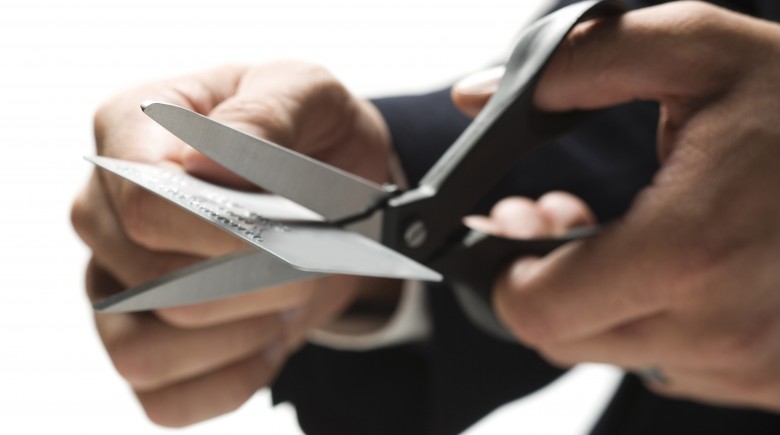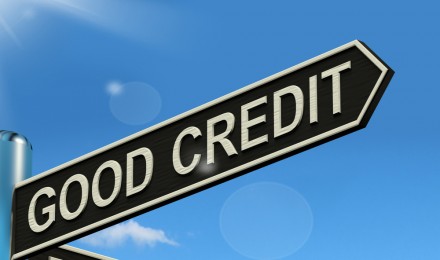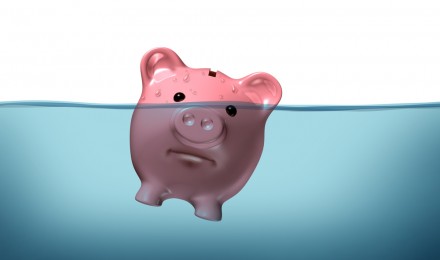Debt is like a disease that doesn’t go away. It can zap your happiness, consume your thinking – and like many illnesses – the recovery can take years.
Understandably, there is nothing fun about high credit card bills and debt collection letters. There is, however, light at the end of every tunnel. It took more than a day to dig this hole, and it’s going to take more than a day to pay down what you owe. To achieve this goal, you need a debt reduction plan.
It isn’t enough to say “I want to pay off my credit card debt.” You need a plan – it’s the only way to stay on track and monitor your progress. Many people go about debt elimination the wrong way. Sure, they might make higher payments each month. But if this is their only plan of attack, it’ll take longer to pay off balances – or worse – they might give up after one or two months and fall back into old habits.
It’s all about a good, workable strategy.
1. Write down your debt.
Knowing where you stand is the first step to reducing your credit card debt. Think about it, how can you really develop a debt elimination plan if you don’t know what you owe?
This is by far the most uncomfortable part of paying down credit cards, as you’re forced to come to terms with your balances. But nobody said recovery was easy. Grab all your statements and jot down the balance for each credit card, along with your interest rates.
2. Track your spending and cut back.
Paying the minimum is not the way to eliminate debt – no surprise here. You’ve got to pay more than your minimum. However, doubling or tripling your minimum won’t cut it, especially if you’re trying to eliminate high balances quickly.
Here’s what you need to do. For a few weeks or maybe a month, keep track of every single expense. Not only your recurring expenses, but also little expenses, such as lunches, shopping and miscellaneous expenses. Getting rid of credit card debt often involves making room in your budget for higher credit card payments, and to do this, you have to cut unnecessary spending.
How much do you spend dining out each week? How much does your shopping habit cost you each month? Are there expenses you can cancel, such as premium cable services, gym memberships, lawn care services or perhaps your housekeeping service?
Think about it from this angle: if you’re able to free up $300 a month, just by simply cutting back and being more frugal, you can pay off a $3,000 credit card balance in less than a year.
3. Tackle your interest rates.
To speed this whole process and pay down balances faster, get on the phone and ask your creditors for a better interest rate. There’s no guarantee that this approach with fly with your creditors. But if you always pay the credit card on time and have a fairly okay credit score, it’s worth asking.
A cheaper rate means that you’ll be charged less interest each month, and with this, a greater percentage of your payments will go toward your principal. A better rate coupled with higher monthly payments can give your debt elimination effort an amazing boost.
4. Ditch your credit cards.
Overspending probably got you into this mess. There is always going to be temptation to shop, and if you walk around with credit cards in your wallet, there’s a chance that you’ll give in to this temptation.
Grab the biggest pair of scissors you can find and cut your cards in half, or if you’re not ready for this, lock them away.
Debt is like a disease that doesn’t go away. It can zap your happiness, consume your thinking – and like many illnesses – the recovery can take years.
Understandably, there is nothing fun about high credit card bills and debt collection letters. There is, however, light at the end of every tunnel. It took more than a day to dig this hole, and it’s going to take more than a day to pay down what you owe. To achieve this goal, you need a debt reduction plan.
It isn’t enough to say “I want to pay off my credit card debt.” You need a plan – it’s the only way to stay on track and monitor your progress. Many people go about debt elimination the wrong way. Sure, they might make higher payments each month. But if this is their only plan of attack, it’ll take longer to pay off balances – or worse – they might give up after one or two months and fall back into old habits.
It’s all about a good, workable strategy.
1. Write down your debt.
Knowing where you stand is the first step to reducing your credit card debt. Think about it, how can you really develop a debt elimination plan if you don’t know what you owe?
This is by far the most uncomfortable part of paying down credit cards, as you’re forced to come to terms with your balances. But nobody said recovery was easy. Grab all your statements and jot down the balance for each credit card, along with your interest rates.
2. Track your spending and cut back.
Paying the minimum is not the way to eliminate debt – no surprise here. You’ve got to pay more than your minimum. However, doubling or tripling your minimum won’t cut it, especially if you’re trying to eliminate high balances quickly.
Here’s what you need to do. For a few weeks or maybe a month, keep track of every single expense. Not only your recurring expenses, but also little expenses, such as lunches, shopping and miscellaneous expenses. Getting rid of credit card debt often involves making room in your budget for higher credit card payments, and to do this, you have to cut unnecessary spending.
How much do you spend dining out each week? How much does your shopping habit cost you each month? Are there expenses you can cancel, such as premium cable services, gym memberships, lawn care services or perhaps your housekeeping service?
Think about it from this angle: if you’re able to free up $300 a month, just by simply cutting back and being more frugal, you can pay off a $3,000 credit card balance in less than a year.
3. Tackle your interest rates.
To speed this whole process and pay down balances faster, get on the phone and ask your creditors for a better interest rate. There’s no guarantee that this approach with fly with your creditors. But if you always pay the credit card on time and have a fairly okay credit score, it’s worth asking.
A cheaper rate means that you’ll be charged less interest each month, and with this, a greater percentage of your payments will go toward your principal. A better rate coupled with higher monthly payments can give your debt elimination effort an amazing boost.
4. Ditch your credit cards.
Overspending probably got you into this mess. There is always going to be temptation to shop, and if you walk around with credit cards in your wallet, there’s a chance that you’ll give in to this temptation.
Grab the biggest pair of scissors you can find and cut your cards in half, or if you’re not ready for this, lock them away.







